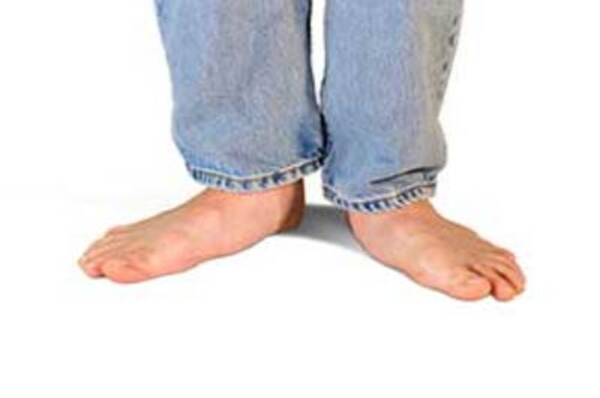
In a normal foot, the tendons in your foot and lower leg work together to form the arch. When the tendons all pull together properly, your foot forms a moderate, normal arch. When the tendons do not pull together properly, there is little or no arch, resulting in Flatfoot deformity or fallen arches.
Children are born with flat feet. In infants and toddlers, prior to walking, the longitudinal arch is not developed and flat feet are normal. As children begin standing on their toes, the muscles start to develop and an arch appears. The arch continues to develop throughout childhood, and by adulthood most people have developed normal arches. But in some cases the arch doesn’t form completely.
Having flat feet can be painless and is actually normal in some people. But others with flat feet experience pain in the heel or arch area, difficulty standing on tiptoe, or have swelling along the inside of the ankle. They may also experience pain after standing for long periods of time or playing sports. Some back problems can also be attributed to flat feet.
Flatfoot in adults can appear for a number of reasons:
- Arches never developed properly
- Damage to the tendons that support the arch
- Damage or inflammation of the posterior tibial tendon which runs from your lower leg, down and across your ankle, and connects to the middle of the arch
- Trauma involving broken bones in the foot
- Rheumatoid arthritis
- Aging
- Pregnancy
- Nerve damage
- Obesity
- Diabetes
Symptoms of flat feet
- Feet tire easily and become painful and achy, especially around the arch, ankle and heel
- Swelling on the inside bottom of your feet
- Back and leg pain
- Difficulty standing on toes
Treatment for Flatfoot Deformity
The treatment your podiatrist recommends will depend upon the trouble and pain you’re experiencing. Custom shoe inserts (orthotics) are most often recommended and are quite effective. Stretching exercises to loosen and strengthen the supporting tendons may also be recommended.
Progressive flatfoot, also known as adult-acquired flatfoot or posterior tibial tendon dysfunction (PTTD), is a very painful condition.
The posterior tibial tendon is a major supporting structure of the ankle. Adult-acquired flatfoot arises when this tendon becomes inflamed, stretched, or torn from an injury or overuse. The condition is very painful, because the soft tissue near the tendon is also damaged and irritated. Eventually, the tendon can no longer provide the support required for the arch, and the foot slowly becomes flat. Left untreated, it will become worse (progressive…) and may lead to severe disability and chronic pain.
Ironically, most patients who suffer with adult-acquired flatfoot already have flat feet, but the arch becomes flatter than before. Contributing factors are diabetes, hypertension, and obesity.
When PTTD initially develops, pain is felt on the inside of the foot and ankle, along the course of the tendon. In addition, the area may be red, warm, or swollen. Later, as the arch begins to flatten, the foot and toes begin to turn outward and the ankle rolls inward.
As PTTD becomes more advanced, the arch flattens even more and the pain often shifts to the outside of the foot, below the ankle. At this point, the tendon has deteriorated considerably and arthritis often develops in the foot. In more severe cases, arthritis may also develop in the ankle.
Treatment for PTTD
Because of the progressive nature of PTTD, early treatment is critical. If treated soon enough, symptoms may resolve without the need for surgery and progression of the condition can be stopped. If left untreated, PTTD may create an extremely flat foot, painful arthritis in the foot and ankle, and will limit your ability to walk, run, and other activities.
Your podiatrist at PA Foot and Ankle Associates may recommend one or more of these non-surgical treatments to manage your PTTD:
- Orthotic devices or bracing. To give your arch the support it needs, your foot and ankle surgeon may recommend an ankle brace or a custom orthotic device that fits into your shoe to support the arch
- Immobilization. A short-leg cast or boot may be worn to immobilize the foot and allow the tendon to heal
- Physical therapy. Ultrasound therapy and stretching exercises may help rehabilitate the tendon and muscle following immobilization
- Medications. Nonsteroidal anti-inflammatory drugs (NSAIDs), such as ibuprofen, help reduce the pain and inflammation
- Shoe modifications. Your foot and ankle surgeon may recommend changes in your footwear
When Is Surgery Needed?
In cases of PTTD that have progressed substantially or have failed to improve with non-surgical treatment, surgery may be required and in some advanced cases, surgery may be the only option. Your foot and ankle surgeon will determine the best approach for you.
